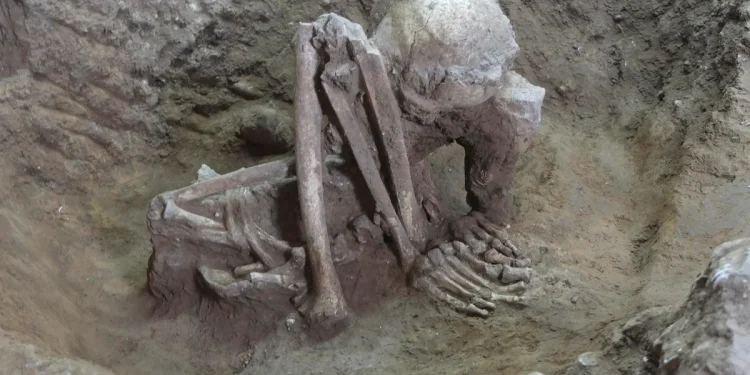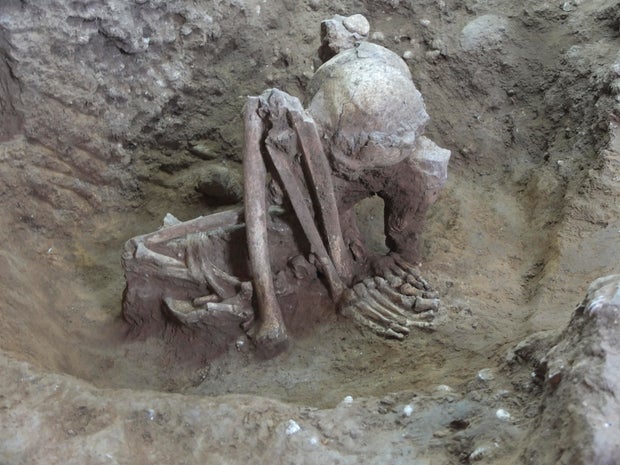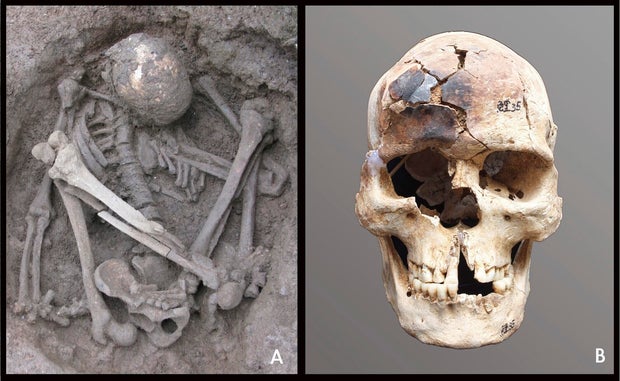Scientists have discovered what is considered the oldest known old mummies in Southeast Asia dating back 12,000 years.
Mummification prevents decomposition by preserving the corpses. The process can occur naturally in places such as the sands of Atacama Chile desert Or the peat bogs of Ireland where the conditions can postpone the decomposition. Humans through various cultures have also mummified their ancestors by embalming to honor them or send their souls to the beyond.
Egypt mummies may be the best known, but so far, some of the oldest mummies have been prepared by a fisherman called the chinchorro about 7,000 years ago in what is Peru and Chile.
A new study published Monday in the Revue Proceedings of the National Academy of Sciences repels this chronology.
Hirofumi Matsumura / AP
Researchers have found human remains that have been buried in squatting or squatting positions with some cuts and burns marks in various archaeological sites through China and Vietnam and, to a lesser extent, the Philippines, Laos, Thailand, Malaysia and Indonesia.
By studying more the bones, scientists discovered that bodies were probably exposed to heat. This suggested that the bodies had been dried to smoke on a fire and mummified by the region’s hunter communities.
The practice “allowed people to maintain physical and spiritual ties with their ancestors, the bridging time and memory,” said the study author Hirofumi Matsumura with Sapporo Medical University in Japan.
The results were “a big surprise,” said Hsiao-Chun Hung, principal researcher at the Australian National University.
“The bones are so old, and it is remarkable to discover that this tradition is so old, connecting the practices of ancient peoples with those who are still in certain communities today,” said Hung.
The process allowed relatives to maintain contact with the deceased and, in some cases, allowed the mind to walk freely during the day and return to a body at night.
“I believe that it reflects something deeply human – the timeless wish that our loved ones never leave us, but stay by our side forever,” Hung told Agency France -Press.
Researchers theorize that practice may have been common in ancient Asian civilizations.
“This tradition was perhaps known among hunter societies in a vast region, for several millennia,” they wrote in the study,
Li Zhen and Hirofumi Matsumuravia via AP
The dating methods used on mummies could have been more robust and it is not yet clear that mummies were always dried by smoke in all these locations in Southeast Asia, said human evolution expert Rita Peyroteo Stjerna with the University of Uppsala in Sweden, which was not involved in research.
The results offer “an important contribution to the study of prehistoric funeral practices,” she said in an email.
Mummies are far from being something in the past. Even today, the indigenous communities in Australia and Papua New Guinea smoke and mummify their dead, said scientists.
Agency France-Press contributed to this report.











